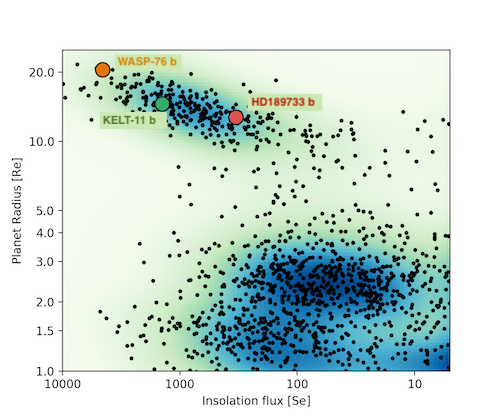Wind of Change: Atmospheric wind retrieval and its implications for hot Jupiters
- 1University of Geneva, Physics, Astronomy, Versoix, Switzerland (julia.seidel@unige.ch)
- 2Anton Pannekoek Institute for Astronomy, University of Amsterdam, Science Park 904, 1098 XH Amsterdam, The Netherlands
- 3Leiden Observatory, Leiden University, Postbus 9513, 2300 RA Leiden, The Netherlands
The sodium doublet is one of the most powerful probes of exoplanet atmospheric properties when observed in transmission spectroscopy during transits. Recent high-spectral resolution observations of the sodium doublet in hot gas giants allowed us to resolve the line shape, opening the way for extracting atmospheric properties using line-profile fitting.
Using the MERC code (Seidel et al. 2020a), a retrieval tool to determine temperature-pressure profiles and high-altitude winds in exoplanet thermospheres, we have studied the curiously broadened sodium signatures of various hot Jupiters. We have updated the MERC code to a quasi 3D treatment of the atmosphere (Seidel et al. 2020c, in prep.) and analysed three hot Jupiters, spanning a wide range of this class of exoplanets (see figure). Using the sodium signature of three examples - WASP-76b (a highly irradiated ultra-hot Jupiter, Seidel et al. 2019), KELT-11b (a puffy hot Jupiter, Mounzer et al. 2020, in prep.), and lastly HD189733b (one of the most studied hot Jupiters to date, Wyttenbach et al. 2015) - we explore possible trends in the atmospheric structure of hot Jupiters.
We will first introduce the new quasi 3D retrieval of MERC, and proceed to show that high-velocity winds in the thermosphere are one possible explanation of the broadened sodium features seen in hot Jupiters. We plan to highlight various caveats and present likely origin scenarios for the observed wind patterns. We will then put these results in the context of past studies using global circulation models (GCMs) on hot Jupiters.

How to cite: Seidel, J., Ehrenreich, D., Bourrier, V., Pino, L., Wyttenbach, A., Allart, R., Lavie, B., Mounzer, D., and Lovis, C.: Wind of Change: Atmospheric wind retrieval and its implications for hot Jupiters, Europlanet Science Congress 2020, online, 21 Sep–9 Oct 2020, EPSC2020-273, https://doi.org/10.5194/epsc2020-273, 2020.

